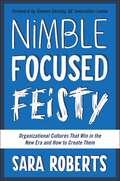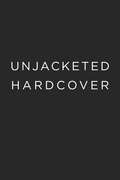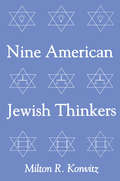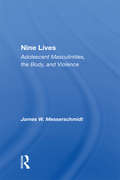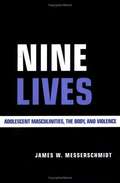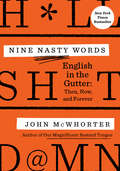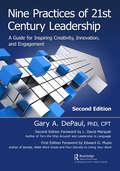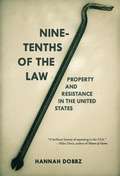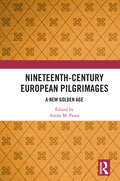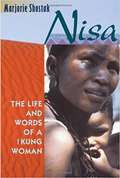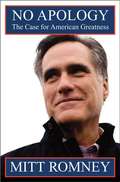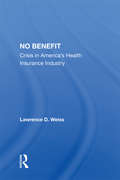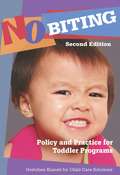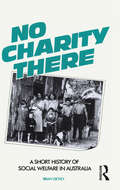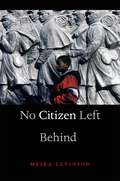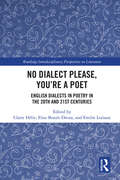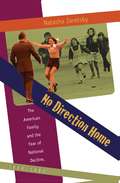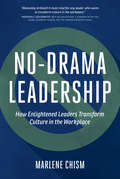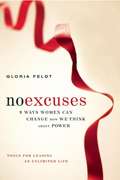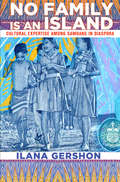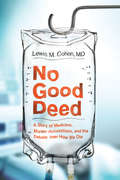- Table View
- List View
Nimble, Focused, Feisty: Organizational Cultures That Win in the New Era and How to Create Them
by Sara RobertsLeaders have talked about the importance of corporate culture for decades, but the success of iconic companies like GE, Apple, and Google shows how culture is a strategic lever that can be utilized for driving growth, change, and innovation. In this new age of globalization, rapid technology shifts, and constant disruption, the 21st century marketplace is more volatile and uncertain than ever. To thrive, businesses need a new kind of emphasis around culture. Sara Roberts, former CEO and founder of Roberts Golden and a seasoned executive consultant to dozens of Fortune 500 companies and CEOs, sees how flourishing companies—from established market leaders to the surprising upstarts—share three distinct attributes: Nimble: They are much faster and more agile than ordinary organizations Focused: They use their sense of purpose as a lens to understand and meet the needs of customers and markets Feisty: They play big and act bold to capitalize on advantages and out-muscle the competition For successful companies in this new era, culture is not about playing defense but about going on offense. It's purposely designed, leveraged, and honed to deliver value and drive growth. In Nimble, Focused, Feisty, Roberts provides not only a look into what these organizations are doing differently but also a blueprint and framework so your company can create a cultural strategy to thrive in the new era.
Nimo's War, Emma's War: Making Feminist Sense of the Iraq War
by Cynthia EnloeIn a book that once again blends her distinctive flair for capturing the texture of everyday life with shrewd political insights, Cynthia Enloe looks closely at the lives of eight ordinary women, four Iraqis and four Americans, during the Iraq War.
Nine American Jewish Thinkers
by Milton KonvitzThe nine American Jews of whom Milton Konvitz writes are philosophers, jurists, or rabbis, widely known and readily accepted as American Jewish thinkers. Their work reflects all essential Jewish values. Each person in his own way has dedicated his work to the betterment of life and the advancement of human ideals. In this sense, their Jewishness is not defined by religion alone. Americanism permeated all they thought and all they did.Konvitz argues that in the complex modern world, secularists often serve God more handsomely than do members of synagogues or churches. For example, when the Supreme Court in 1954 (with Felix Frankfurter playing a key role behind the scenes) agreed to outlaw segregation of the races in public schools, was the Court's action secular or religious? When Congress passed the statute known as the Americans with Disabilities Act, requiring equal treatment of handicapped persons, was the action secular or religious? Is a minimum wage act secular or religious? Is Medicaid a secular or a religious act? Konvitz believes the distinction is not useful, or even possible.The book is divided into three parts, reflecting Konvitz's range of intellectual interests. The nine essays offer concise intellectual biographies of three American Jewish philosophers, three Supreme Court Justices, and three rabbis. The philosophers-Horace M. Kallen, Morris Raphael Cohen, and Sidney Hook-are world-renowned. The jurists-Louis D. Brandeis, Benjamin N. Cardozo, and Felix Frankfurter-hold prominent places in American legal history. And the three rabbis-Leo Jung, Robert Gordis, and Jacob Agus-are known wherever Jewish thought is studied. By treating with equal seriousness the lives and writings of both religious and secularist thinkers, the author intentionally minimizes the conventional antagonism and frequent conflict between religion and secularism.An unusual feature of the book is the fact that the author was a close friend of six of the persons whose lives and work are examined, allowing him a perceptive insight into their character and thought. Although the book is about serious subjects, its graceful style makes the contents easily accessible to lay persons as well as scholars and students of Judaica.
Nine Lives: Adolescent Masculinities, The Body And Violence
by James MesserschmidtSociologists and criminologists have long known that there is a relationship between masculinity and crime, for gender has been advanced consistently as the strongest predictor of criminal involvement. Nine Lives, written by one of the most respected authorities on the subject of gender and crime, provides a fascinating account of the connection am
Nine Lives: Adolescent Masculinities, The Body And Violence
by James W. MesserschmidtSociologists and criminologists have long known that there is a relationship between masculinity and crime, for gender has been advanced consistently as the strongest predictor of criminal involvement. Nine Lives, written by one of the most respected authorities on the subject of gender and crime, provides a fascinating account of the connection among adolescent masculinities, the body, peer abuse in schools, and violence. Drawing on penetrating life-history interviews of nine white, working-class, teenage boys, James W. Messerschmidt unravels some of the mysteries of teenage violence. This book is a comparative analysis of male sex offenders, assaultive offenders, and nonviolent boys, and has implications for understanding and preventing such national tragedies as the recent school shootings in the United States. In this captivating study, Messerschmidt talks to these boys in depth about their experiences, and he learns what they actually did and experienced in their lives that resulted in sexual or assaultive violence, or nonviolence. Prior to this study there was no information or empirical research on the agency of the adolescent-male offender, or on how such agency relates to masculinity and violence/nonviolence. Nine Lives is also unique because of its examination of how teenage males construct, interpret, and attempt to comprehend their own lives, and the world around them. Messerschmidt addresses the following chief questions: Why do some boys engage in violence and some boys do not? And, why do those boys who engage in violence commit different types? This differential use of violence is examined as a resource for "doing masculinity" in certain situations and under specific circumstances. Although none of the boys in Nine Lives were involved in school shootings, their life stories--and the social processes surrounding their violence--are relevant to understanding the school killings from Moses Lake, Washington to Littleton, Colorado.
Nine Nasty Words: English in the Gutter: Then, Now, and Forever
by John McWhorterOne of the preeminent linguists of our time examines the realms of language that are considered shocking and taboo in order to understand what imbues curse words with such power--and why we love them so much. <P><P>Profanity has always been a deliciously vibrant part of our lexicon, an integral part of being human. In fact, our ability to curse comes from a different part of the brain than other parts of speech--the urgency with which we say "f&*k!" is instead related to the instinct that tells us to flee from danger. <P><P>Language evolves with time, and so does what we consider profane or unspeakable. Nine Nasty Words is a rollicking examination of profanity, explored from every angle: historical, sociological, political, linguistic. In a particularly coarse moment, when the public discourse is shaped in part by once-shocking words, nothing could be timelier. <P><P><b>A New York Times Bestseller</b>
Nine Practices of 21st Century Leadership: A Guide for Inspiring Creativity, Innovation, and Engagement
by Gary A. DePaulNear the end of the 20th Century, the leadership concept radically evolved away from the traditional concept of accomplishing work through others. Unfortunately, too many professionals unconsciously still have faulty traditional assumptions that can get them, their teams, and their organizations in trouble. The author has researched the evolution of leadership and summarizes seven contemporary principles, twenty-six underlying leadership beliefs, and nine crucial practices of 21st Century Leadership. While too many leadership books focus on qualities, DePaul explains specific behaviors for practicing leadership. The second edition includes new research about leadership and leadership development. With the pandemic, organizations have had to rely more on effective leadership to build high-performing teams, often at a distance. Training departments have had to radically update how they develop employees at all levels, and executive coaches have transitioned to virtual client support. With all these environmental changes as well as new social pressures on organizations to embrace diversity, equity, and inclusion, organizations need to change how they lead and avoid allowing their culture to develop by chance.
Nine-tenths of the Law
by Hannah Dobbz"Millions of foreclosed homes and abandoned buildings on one hand; millions of Americans desperate for decent shelter on the other. Hannah Dobbz makes the necessary addition of resources and needs in a book that is both a brilliant history of squatting in the USA and a template for the next stage of the Occupy movement.--Mike Davis, author of Planet of Slums and Buda's WagonHow does "property" fit into designs for an equitable society? Nine-tenths of the Law examines the history of squatting and property struggles in the United States, from colonialism to twentieth century urban squatting and the foreclosure crisis of the late 2000s, and how such resistance movements shape the law. Stories from our most hard-hit American cities show that property is truly in crisis:One in five homes in Buffalo, NY, are abandoned.Our national housing vacancy rate is 14 percent. If we gave a house to every homeless person in the United States two-thirds of that stock would remain empty.In May of 2011, one in every 103 homes in Nevada was in foreclosure.Nine-tenths of the Law expands our understanding of property law and highlights recent tactics like creative squatting ventures and the use of adverse possession to claim title to vacant homes. Hannah Dobbz unveils the tangled relationship Americans have always had in creating and sustaining healthy communities.Hannah Dobbz is a writer, editor, filmmaker, and former squatter. In 2007 she produced a film about squatters in the Bay Area called Shelter. The film has screened widely at universities, bookstores, and community spaces, including the 2009 Three Rivers Film Festival in Pittsburgh, Pennsylvania.
Nineteenth-Century European Pilgrimages: A New Golden Age
by Antón M. PazosDuring the Nineteenth-Century a major revival in religious pilgrimage took place across Europe. This phenomenon was largely started by the rediscovery of several holy burial places such as Assisi, Milano, Venice, Rome and Santiago de Compostela, and subsequently developed into the formation of new holy sites that could be visited and interacted with in a wholly Modern way. This uniquely wide-ranging collection sets out the historic context of the formation of contemporary European pilgrimage in order to better understand its role in religious expression today. Looking at both Western Catholic and Eastern Orthodox Europe, an international panel of contributors analyse the revival of some major Christian shrines, cults and pilgrimages that happened after the rediscovery of ancient holy burial sites or the constitution of new shrines in locations claiming apparitions of the Virgin Mary. They also shed new light on the origin and development of new sanctuaries and pilgrimages in France and the Holy Land during the Nineteenth Century, which led to fresh ways of understanding the pilgrimage experience and had a profound effect on religion across Europe. This collection offers a renewed overview of the development of Modern European pilgrimage that used intensively the new techniques of organisation and travel implemented in the Nineteenth-Century. As such, it will appeal to scholars of Religious Studies, Pilgrimage and Religious History as well as Anthropology, Art, Cultural Studies, and Sociology.
Nisa: The Life And Words Of A !Kung Woman
by Marjorie ShostakThis book is the story of the life of Nisa, a member of the !Kung tribe of hunter-gatherers from southern Africa's Kalahari desert. Told in her own words--earthy, emotional, vivid--to Marjorie Shostak, a Harvard anthropologist who succeeded, with Nisa's collaboration, in breaking through the immense barriers of language and culture, the story is a fascinating view of a remarkable woman. Includes Glossary and Notes.
Nixon's Good Deed: Welfare Reform
by Vincent J. Burke Vee BurkeBut somewhere between conception and birth the Family Assistance Plan foundered. Most participants in the development and legislative process surrounding the Family Assistance Plan had differing ideas of what it could and could not accomplish. To some it was a harsh workfare program; to others a give-away guaranteed income program.
No Apology: The Case for American Greatness
by Mitt RomneyRecent presidential candidate and Massachusetts governor Romney charts a dramatic new course to confront the most critical issues facing America.
No Benefit: Crisis In America's Health Insurance Industry
by Lawrence D. WeissThe private health insurance industry is unable to provide nearly 40 million Americans with basic health care. Relying on data from a wide range of publications about this secretive industry, Lawrence D. Weiss investigates the causes of the industry's problems and analyzes the social effects of the growing crisis. The causes include excessive overhead costs, widespread inefficiency, and exemptions from antimonopoly regulations; the social effects include small businesses' inabilities to provide adequate coverage for their employees, the reluctance of many carriers to insure certain social groups, and the disproportionate burden on minorities. Addressing these dilemmas, Lawrence D. Weiss offers a timely and important analysis of the health insurance crisis in America.
No Biting: Policy and Practice for Toddler Programs, Second Edition
by Gretchen KinnellBiting is one of the most frustrating and widespread issues childcare providers and parents face.No Biting discusses why toddlers bite, how to respond to biting, and how to develop a plan to address repeated biting.<P><P> It also explores what parents think of biting, how to respond to their suggestions and demands, and how to create biting policies. This second edition includes additional anti-biting strategies, new information on the causes of biting, and sample newsletter articles to educate parents.
No Charity There: A short history of social welfare in Australia
by Brian DickeyNo Charity There, now in a revised edition, provides the first general history of social welfare in Australia. It traces the development of official and community attitudes to demands and expectations.Using material not previously readily available, Brian Dickey analyses how Australian society has sought to solve the problems raised by a wide variety of vulnerable groups since 1788: the aged, orphans, single mothers, the insane, alcoholics and the unemployed.No Charity There is a carefully researched and intelligent study of a subject of ever-increasing importance.
No Child Left Behind and the Reduction of the Achievement Gap: Sociological Perspectives on Federal Educational Policy
by Alan R. Sadovnik Jennifer A. O’Day George W. Bohrnstedt Kathryn M. BormanThis monumental collection presents the first-ever sociological analysis of the No Child Left Behind Act and its effects on children, teachers, parents, and schools. More importantly, these leading sociologists consider whether NLCB can or will accomplish its major goal: to eliminate the achievement gap by 2014. Based on theoretical and empirical research, the essays examine the history of federal educational policy and place NCLB in a larger sociological and historical context. Taking up a number of policy areas affected by the law—including accountability and assessment, curriculum and instruction, teacher quality, parental involvement, school choice and urban education—this book examines the effects of NCLB on different groups of students and schools and the ways in which school organization and structure affect achievement. No Child Left Behind concludes with a discussion of the important contributions of sociological research and sociological analysis integral to understanding the limits and possibilities of the law to reduce the achievement gap.
No Citizen Left Behind
by Meira LevinsonWhile teaching at an all-Black middle school in Atlanta, Meira Levinson realized that studentsâ individual self-improvement would not necessarily enable them to overcome their profound marginalization within American society. This is because of a civic empowerment gap that is as shameful and antidemocratic as the academic achievement gap targeted by No Child Left Behind. No Citizen Left Behind argues that students must be taught how to upend and reshape power relationships directly, through political and civic action. Drawing on political theory, empirical research, and her own on-the-ground experience, Levinson shows how de facto segregated urban schools can and must be at the center of this struggle. Recovering the civic purposes of public schools will take more than tweaking the curriculum. Levinson calls on schools to remake civic education. Schools should teach collective action, openly discuss the racialized dimensions of citizenship, and provoke students by engaging their passions against contemporary injustices. Students must also have frequent opportunities to take civic and political action, including within the school itself. To build a truly egalitarian society, we must reject myths of civic sameness and empower all young people to raise their diverse voices. Levinsonâs account challenges not just educators but all who care about justice, diversity, or democracy.
No Closure: Catholic Practice and Boston's Parish Shutdowns
by John C. SeitzIn 2004 the Roman Catholic Archdiocese of Boston announced plans to close more than eighty churches. Distraught parishioners occupied several of these buildings in opposition to the decrees. Seitz tells the stories of these resisting Catholics in their own words, illuminating how they were drawn to reconsider the past and its meanings.
No Dialect Please, You're a Poet: English Dialect in Poetry in the 20th and 21st Centuries (Routledge Interdisciplinary Perspectives on Literature)
by Claire Hélie Elise Brault-Dreux Emilie LoriauxNo Dialect Please, You're a Poet is situated at the crossroads in research areas of literature and linguistics. This collection of essays brings to the forefront the many ways in which dialect is present in poetry and how it is realised in both written texts and oral performances. In examining works from a wide range of poets and poetries, from acclaimed poets to emerging ones, this book offers a comprehensive introduction to poetics of dialects from a variety of regions, across two centuries of English poetry.
No Direction Home
by Natasha ZaretskyBetween 1968 and 1980, fears about family deterioration and national decline were ubiquitous in American political culture. In No Direction Home, Natasha Zaretsky shows that these perceptions of decline profoundly shaped one another. Throughout the 1970s, anxieties about the future of the nuclear family collided with anxieties about the direction of the United States in the wake of military defeat in Vietnam and in the midst of economic recession, Zaretsky explains. By exploring such themes as the controversy surrounding prisoners of war in Southeast Asia, the OPEC oil embargo of 1973-74, and debates about cultural narcissism, Zaretsky reveals that the 1970s marked a significant turning point in the history of American nationalism. After Vietnam, a wounded national identity--rooted in a collective sense of injury and fueled by images of family peril--exploded to the surface and helped set the stage for the Reagan Revolution. With an innovative analysis that integrates cultural, intellectual, and political history, No Direction Home explores the fears that not only shaped an earlier era but also have reverberated into our own time.
No Drama Leadership: How Enlightened Leaders Transform Culture in the Workplace
by Marlene ChismChoice. Power. Speed. Today's leaders continually face these forces. But with too many choices, too much power, and too much speed, leaders often make decisions in a heightened state of emotion (and drama). Hasty decisions are often poor ones and in this climate there is no place to hide. Privacy is a thing of the past; the days of covering up or ignoring a problem are over. In today's transparent culture, the decision making of leaders is more vulnerable than ever--and it is more critical than ever to get it right.Marlene Chism's No-Drama Leadership introduces just the model the corporate world needs. Using case studies, checklists, and examples from various levels of hierarchy in leadership and from a variety of industries, Chism introduces the mindset shifts and practical skills needed to develop enlightened leaders, whose decision making flows from a much more grounded and aligned place. Today's leader needs more than position, power, or business acumen. Today's leader needs more than self-management, communication skills, or emotional intelligence. We need leaders who are aligned, aware, and accountable, who balance choice and power with wisdom and responsibility--leaders who embrace and embody both the inner game of leadership growth with the outer game of business results, modeling both the mindsets and actions that transform the cultures they lead.
No Excuses: 9 Ways Women Can Change How We Think About Power
by Gloria FeldtThrough interviews, historical perspective, and anecdotes, feminist icon Feldt examines why barriers to gender equality still exist in American society, and explains nine ways women can change how they think about power.
No Family Is An Island: Cultures and Technologies of Knowledge)
by Ilana GershonGovernment bureaucracies across the globe have become increasingly attuned in recent years to cultural diversity within their populations. Using culture as a category to process people and dispense services, however, can create its own problems and unintended consequences. In No Family Is an Island, a comparative ethnography of Samoan migrants living in the United States and New Zealand, Ilana Gershon investigates how and when the categories "cultural" and "acultural" become relevant for Samoans as they encounter cultural differences in churches, ritual exchanges, welfare offices, and community-based organizations. In both New Zealand and the United States, Samoan migrants are minor minorities in an ethnic constellation dominated by other minority groups. As a result, they often find themselves in contexts where the challenge is not to establish the terms of the debate but to rewrite them. To navigate complicated and often unyielding bureaucracies, they must become skilled in what Gershon calls "reflexive engagement" with the multiple social orders they inhabit. Those who are successful are able to parlay their own cultural expertise (their "Samoanness") into an ability to subtly alter the institutions with which they interact in their everyday lives. Just as the "cultural" is sometimes constrained by the forces exerted by acultural institutions, so too can migrant culture reshape the bureaucracies of their new countries. Theoretically sophisticated yet highly readable, No Family Is an Island contributes significantly to our understanding of the modern immigrant experience of making homes abroad.
No Future: Punk, Politics and British Youth Culture, 1976–1984
by Worley Matthew'No Feelings', 'No Fun', 'No Future'. The years 1976-84 saw punk emerge and evolve as a fashion, a musical form, an attitude and an aesthetic. Against a backdrop of social fragmentation, violence, high unemployment and socio-economic change, punk rejuvenated and re-energised British youth culture, inserting marginal voices and political ideas into pop. Fanzines and independent labels flourished; an emphasis on doing it yourself enabled provincial scenes to form beyond London's media glare. This was the period of Rock Against Racism and benefit gigs for the Campaign for Nuclear Disarmament and the striking miners. Matthew Worley charts the full spectrum of punk's cultural development from the Sex Pistols, Buzzcocks and Slits through the post-punk of Joy Division, the industrial culture of Throbbing Gristle and onto the 1980s diaspora of anarcho-punk, Oi! and goth. He recaptures punk's anarchic force as a medium through which the frustrated and the disaffected could reject, revolt and re-invent.
No Good Deed: A Story of Medicine, Murder Accusations, and the Debate over How We Die
by Mitchell CohenAccomplished physician and researcher Dr. Lewis Cohen writes the untold story of two Massachusetts nurses, their struggles with end of life care, and how they were accused of murdering a patient. Captivating and powerful, No Good Deed explores what happens when decisions about end of life issues and the purpose of modern medicine move from the hospital to the courtroom to the church.
